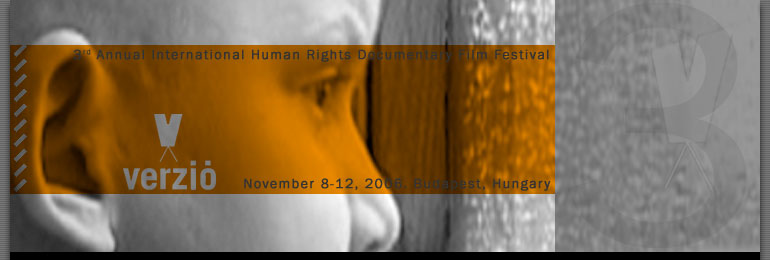Memory of the Spanish Civil War
The retrospective includes newsreels and propaganda films from different camps in Spain as well as international reactions during the war and documentary films from and after the Civil War. The selection highlights a variety of approaches to film footage, its on-going appropriation, reediting, and recontextualization. The program includes some films in which historical material was made to serve contemporary political ends and some that contributed to the preservation of alternative war memories. Is there a true message in archival footage? Everybody is invited to find their own answer.
This retrospective is organized in partnership with the Hungarian National Film Archive and Film Museum. On behalf of the Verzió team I would like to thank Gábor Tanner and Katalin Fejes for working together on this program.
Oksana Sarkisova / Verzió Program Director
The iconography of the Spanish Civil War has become a core element of our world's arsenal of horrors; in many cases its primary display. Its images have been perennially encysted in the occidental imagination, in the same way as was to happen years later when the Nazi concentration and extermination camps were revealed to the amazed eyes of West. Although there is no lack of new catastrophes provoked by men, and there are other wars no less savage, it seems that our symbolic universe has been shaped by the photographs and films of those combats, and is now reluctant to admit new signs. Indeed, some commonplaces of our visual universe, of our fixed memories, are already present in this iconography of the 1930s: the bombing of civilians, the massive exodus of whole families from open cities, exile. In addition, there are battle scenes in the shape of newsreels, not yet broadcast live, but with an effect of reality, unthinkable before that time, make possible by technical developments. For instance, it would be hard to illustrate the Spanish Civil War without Robert Capa's photograph of the militiaman at Muriano hill (Córdoba) or without those eyes of people from Madrid scrutinizing a sky crossed by German planes, shot by the Soviet cameraman Roman Karmen. It is also impossible to ignore the collage that was Picasso's Guernica, which has paradoxically been attributed documentary value despite its abstraction and plastic avant-gardism.
This inscription in the collective imagination is closely linked to the spectacular development of the mass media during the 1930s: illustrated magazines such as Vu, Regards, Time, Life and Picture Post, together with the changes in the different illustrations, shifted attention onto the image as a substitute for, or at least a complement to, the written text. Newsreels about the Civil War created an unprecedented worldwide flow of war images, many of which were later (mis)appropriated by different sides and infinitely recycled, sometimes changing the original message to the opposite.
A retrospective on the images produced during the Spanish War (as is well known, quickly internationalized) seems a good reason to review our 20th century's historic stock of images, or in other words, the roots of our ways of documenting horror. However, the historical revision of films also allows us to examine the way in which each period has dealt with these images, which the audience will be surprised to see repeated: in which new contexts they are inscribed, what new messages or narratives they produce. The idea of this cycle is inscribed in this dialectic among documents of memory, historic documents and political management, aesthetic or cultural.
Where a film like Espana 36 tragically requests international solidarity with the Republic, Espana heroica answers with the same means (editing archive footage) and provides the narrative of the eternal Spain supported by the Nationalist faction. While Spanish Earth dramatizes for the North American community (its ideal audience) the struggle of the loyal people, L'Espoir, commissioned by the Republican government, makes it by fictionalizing an episode that will serve as pars pro toto in order to represent the ultimate meaning of the conflict. During the same years, Ispania would give heroic shape to the the footage that cameramen Karmen and Makaseev had shot amidst the shrapnel to give the world that live image of Spain praised by the Soviet newsreels between 1936 and 1937. And so on until the more recent formulas. Not all of them are here, but there can be no doubt that these are a more than valuable sample.
Vicente Sánchez-Biosca, University of Valencia (Spain)
